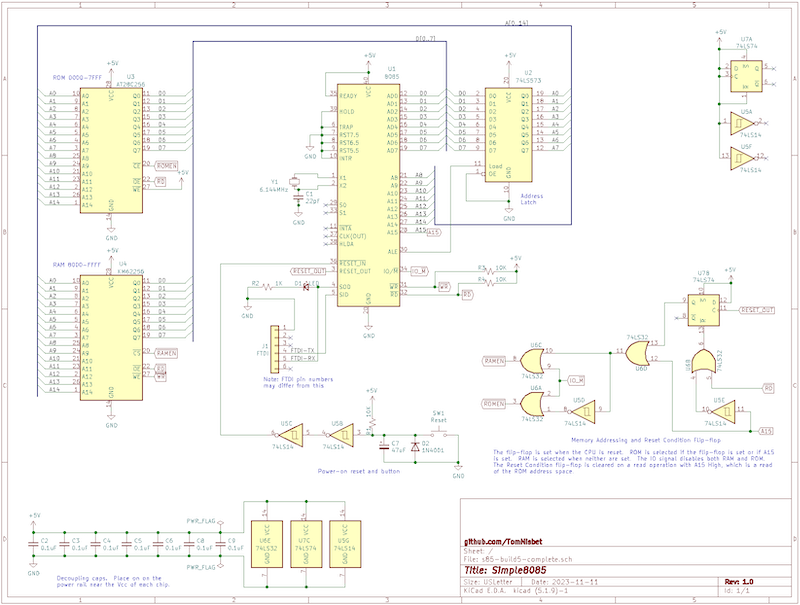Simple 8085 Computer
This is a design for a simple 8085-based single-board computer. It was started as a way to run the software from an old Netronics Explorer/85 board from the early 1980s. The primary purpose of the design is software compatibility, rather than building a chip-for-chip clone of the Explorer. Some chips in this design, such as the 32K EEPROM, were not available when the Explorer was being produced.
This project was inspired by the Glitch Works 8085 SBC and the Saundby MAG-85
Development and Additional Tools
To get the original Netronics software running on a new platform, several additional tools were developed. The complete project consisted of the following:
- Create a software-compatible 8085 computer
- Extract the contents of the original ROMs by booting the Explorer, using the Monitor to dump the ROMs, and capturing the terminal output
- The ROM content, plus the symbol table from the Monitor Source Listing, was fed into the DASMx disassembler to create a Monitor ROM source that could be modified to account for some small hardware differences between the two systems
- The modified Monitor was re-assembled with a new cross assembler that was written for this project
- The new Monitor binary image and the original Basic ROM image were burned into the EEPROM using TommyPROM - an Arduino-based EEPROM reader/writer that was created for this project
Next Steps
Given that the system is functioning on a breadboard, it may not ever be spun into a real PCB. After all, the point was about getting it all working. There are additional software modifications that may still happen, such as:
- Replace the cassette interface code in the Monitor with XMODEM save and restore. This would allow the state to be saved to a host computer.
- Support on-board writing to the EEPROM so that the chip does not need to be pried out and replaced for each change to the system software.
- Add additional languages and tools to the ROM. Possibly Forth, Assembler, or an editor.
